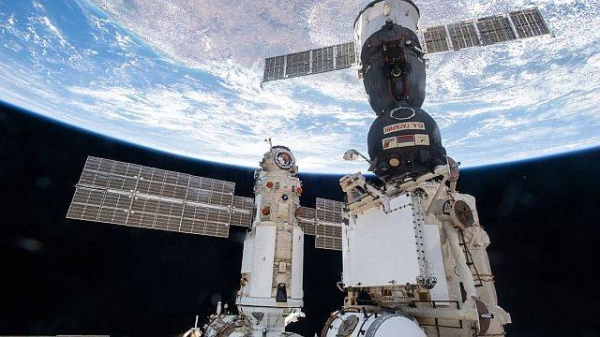A segment of the International Space Station controlled by Russia is currently leaking air and pressure, leading to a tense situation as officials from Roscosmos and NASA disagree on the severity of the problem. The leaking module, known as Zvezda, has been experiencing issues since 2019, but the rate of air leakage has increased significantly this year. NASA considers this to be the most pressing problem facing the space station, as it poses a potential threat to the safety of the crew. Despite efforts to address the leaks, disagreements persist between the two space agencies on the root cause and severity of the problem.
Both the US and Russia have been aware of the gradual leakage in the Russian module for years. The suspected cracks are small and difficult to detect, making it challenging to address the issue properly. Efforts to mitigate the leaks have been somewhat successful, but the leak rate is still above the space station’s baseline. Technical teams from both countries have differing opinions on what might be causing the problem, with Russian experts attributing it to vibrations and mechanical stress, while NASA believes there are multiple factors at play.
The ongoing leak issue raises questions about the safety of the space station and complicates decisions regarding its future operations and disposal. NASA and Roscosmos must work together to reach a consensus on how to address the problem and ensure the safety of the crew aboard the station. Despite disagreements on the severity of the issue, both agencies remain in close communication and are taking steps to ensure astronaut safety, such as implementing precautionary measures and contingency plans.
The US is pushing for independent experts to evaluate the leak issue and assist in reaching a consensus between NASA and Roscosmos. While the US has created its own team of experts, Russia has not yet complied with this recommendation. Efforts to address the leaks are ongoing, and both agencies are working towards finding a solution to the problem. The leaking Russian module may impact cargo delivery and require additional propellant to maintain the station’s altitude and orientation, highlighting the importance of addressing the issue promptly.
As the space station ages, NASA is looking towards the future by exploring options for a new space laboratory that will be operated by the private sector. The goal is to continue essential research on the space station until an alternative comes online. Various commercial outfits, including Blue Origin and SpaceX partner Vast, are developing their own platforms for future space exploration. NASA plans to roll out contracts for the job in 2026, but the timeline for the new space lab’s readiness is uncertain. The deteriorating condition of the space station underscores the urgency of finding a solution to the leaking module issue and ensuring the safety and longevity of the orbiting outpost.











